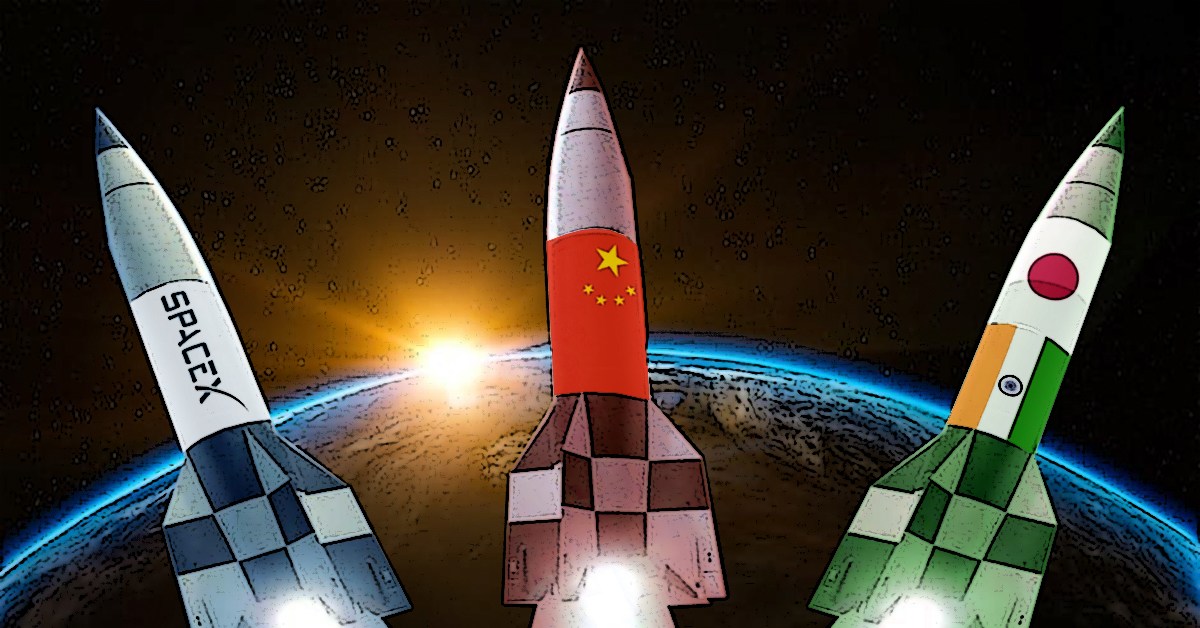Rajeswari Pillai Rajagopalan is a senior fellow and the head of the nuclear and space policy initiative at the Observer Research Foundation.
NEW DELHI — The recent launch of the SpaceX rocket Falcon Heavy is a good illustration of the entry of efficient and innovative private players into an arena long considered the preserve of national governments. But this does not mean that national competition in outer space is disappearing. If anything, it is actually accelerating in Asia. China’s growing space prowess is leading to a space race with India and Japan, which are beginning to pool their resources to better match Beijing.
The India-Japan strategic partnership has grown enormously in the last decade. Last September, Indian Prime Minister Narendra Modi and the Japanese Prime Minister Shinzo Abe recognized the salience of outer space in their bilateral relations and “welcomed the deepening of cooperation between the space agencies of the two countries in the field of Earth observation, satellite-based navigation, space sciences and lunar exploration.” And as the president of the Japan Aerospace Exploration Agency (JAXA) proclaimed two months later: “India and Japan will lead the space sector in the Asia-Pacific region.”
Then in December, JAXA and the Indian Space Research Organization agreed to study a joint “lunar polar exploration” mission, to be completed this March. This will lead to a joint expedition that is expected to land a remotely piloted vehicle on the surface of the moon to collect samples and bring them back to Earth.
Both India and Japan have undertaken successful lunar missions before, but only to study the moon via satellites that orbited above; neither has sent a craft to land on the moon’s surface. And neither country has carried out a lunar mission in almost a decade. Both are acutely aware of what China has accomplished, with four moon missions between 2007 and 2014 alone. China’s technological dominance weighs on the Asian strategic balance, and both India and Japan are clearly feeling the pressure.
One attempt to catch up was a joint India-Japan moon mission that was a finalist for the Google Lunar XPrize competition. TeamIndus, an Indian private aerospace firm, planned to carry a Japanese rover developed by Japan’s Team Hakuto on its spacecraft. But the Google Lunar XPrize competition itself came to an end — none of the teams could meet the launch deadline of March 31, 2018.
The emergence of private space research entities in India represents an exciting development. Though the TeamIndus lunar mission was canceled, the team is working on a couple of different projects, including a satellite bus and a solar-powered drone, both of which it seeks to commercialize in the near future. As Rahul Narayan, the founder of TeamIndus, said: “From an investment standpoint, this will be a three-to-five-year journey until we can stabilize as a standalone company. We are looking at equity investors to come in and take the risk of helping us build the product. By year end, we can start to generate revenues from what we do.”
Asia’s growing space race is indicative of the larger geopolitical competition in the region. China’s rise and the strategic uncertainties it has created are particularly worrying to India and Japan, leading to surprisingly fast-growing India-Japan strategic cooperation.
Though India and Japan have had no history of direct conflict, the two were on opposite sides of the Cold War divide, with Japan formally allied with the United States and India tilting heavily to the Soviet side, leading to cordial but cool ties for decades. But China’s rise has affected both countries and led to an emerging India-Japan consensus on a whole host of global commons issues, such as maritime security and protection of the sea lanes of communication.
The growing intensity of competition in outer space is partially due to the growing number of commercial players and partially due to underlying geopolitical tensions. As during the Cold War, outer space has become one more area of the strategic competition on Earth. This means that the race to return to the moon, as well as to explore the moon and asteroids for mining and resource extraction, are likely to intensify in the coming years.
Even as the U.S. maintains a technological edge in this domain, China is fast catching up. The energized strategic partnership between Moscow and Beijing — another new strategic entente — will only accelerate it. Private players are adding a new dimension to this space race, but national programs are driven by much older and more potent imperatives. As geopolitical competitions sharpen around the globe, those government-led efforts could turn out to be more important than private expeditions.
This was produced by The WorldPost, a partnership of the Berggruen Institute and The Washington Post.





